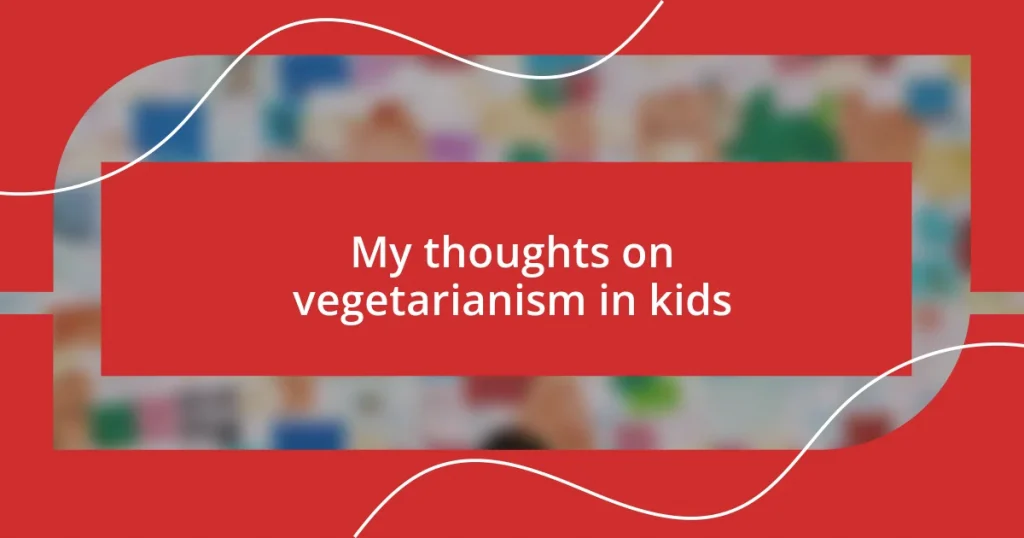Key takeaways:
- Competitions encourage creativity and community, allowing participants to explore unique flavor combinations and learn from one another.
- Key culinary skills developed through competitions include creativity, time management, adaptability, collaboration, and presentation skills.
- Feedback and adaptability are crucial; embracing critiques can significantly improve recipes and enhance overall flavor profiles.

Understanding Burger Competitions
Burger competitions are fascinating events that bring together culinary enthusiasts from all walks of life. I remember attending my first one and feeling the palpable excitement in the air; the smell of sizzling patties and the chatter of passionate competitors made it an unforgettable experience. It’s amazing how these competitions serve as platforms for creativity and innovation in burger-making.
What I find particularly interesting is how each competitor often brings their unique twist to a classic favorite. I once met a participant who reinvented the cheeseburger by incorporating Asian flavors, using teriyaki sauce and bao buns instead of traditional bread. It made me wonder: how far can we push the boundaries of a simple burger? This kind of exploration not only excites the taste buds but also challenges our perceptions of what a burger can be.
Moreover, these competitions often create a supportive community among burger lovers. I’ve seen seasoned chefs mentor newcomers, sharing tips and personal stories. It’s heartening to witness how passion for food can unite people, transcending backgrounds and experiences. Isn’t it beautiful how something as simple as a burger can foster connection and collaboration?

Key Skills Developed in Competitions
Competing in burger competitions has sharpened my culinary skills in ways I never anticipated. Each event pushes me to embrace meticulous attention to detail, whether it’s perfecting my seasoning or ensuring the patty is cooked to perfection. I remember one competition where I almost overlooked the importance of plating. It was a last-minute decision to enhance the presentation, and it made all the difference in the judges’ feedback.
Here are some key skills I’ve developed through these competitions:
- Creativity: Crafting unique flavors and presentations has pushed my culinary boundaries.
- Time Management: Juggling preparation and cooking within a limited timeframe has honed my ability to work efficiently.
- Adaptability: Learning to adjust my recipes on the fly, especially when ingredients didn’t work as planned, has been crucial.
- Collaboration: Working alongside other passionate chefs has taught me the value of sharing ideas and learning from each other’s techniques.
- Presentation Skills: I’ve learned that how you serve the burger can be just as important as how it tastes, turning a simple dish into an art form.

Importance of Flavor Balancing
Flavor balancing is crucial in burger competitions. From my experience, a burger can have the most creative toppings, but if the flavors clash, the entire dish falls flat. I once crafted a burger with spicy jalapeños, sweet mango salsa, and sharp cheddar cheese. Initially, I was excited about the combination, but when I tasted it, I realized the heat overpowered everything else. Adjusting proportions can transform a cacophony into a harmonious bite.
When working with ingredients, I’ve learned that each component should complement rather than compete. For instance, the richness of a brioche bun pairs beautifully with a flavorful beef patty, while a tangy sauce can elevate the overall taste. Balancing acidity and sweetness can enhance the experience; I recall once adding a splash of balsamic reduction to a barbecue sauce. The result? A game-changing depth of flavor that left the judges impressed. It had me thinking about how essential it is to not only taste but to understand the profile of every element on the plate.
Moreover, attention to flavor balance can create memorable experiences—not just for the competitors, but for the judges too. I remember one competition where a teammate and I worked tirelessly to achieve the perfect umami profile in our burger. The judges’ delighted expressions when they took the first bite made all the effort worthwhile. That’s when I truly understood: flavor balancing isn’t just a culinary technique; it’s an art form that evokes emotions and creates lasting memories.
| Flavor Component | Importance |
|---|---|
| Umami | Adds depth and richness to meat. |
| Acidity | Balances richness, enhances flavors. |
| Sweetness | Counteracts heat and bitterness. |
| Heat | Provides excitement and a memorable kick. |

Techniques for Perfect Burger Patties
Crafting perfect burger patties starts with the choice of meat. I’ve often found that using a blend of ground beef with a higher fat content—like 80/20—makes a world of difference. The fat not only contributes to juiciness but also enhances flavor. Have you ever bitten into a dry burger? It’s a disappointing experience, and I’ve made it my mission never to let that happen again.
Shaping the patties correctly is another technique that I learned through trial and error. I used to make thick balls of meat, thinking that would keep them juicy. However, I discovered that evenly shaped patties ensure uniform cooking. By pressing a small indentation in the center of each patty, I noticed they cook more evenly and don’t puff up. This little trick has saved me from those frustrating, misshapen burgers that wouldn’t fit properly in a bun.
Finally, resting the patties after cooking is essential. I remember the first time I pulled a patty straight off the grill and bit into it, eager to taste my creation. Instead of bursting with flavor, it felt like a letdown—all the juices ran out. Now, I always let my patties rest for a few minutes before serving. It’s made all the difference in delivering a truly satisfying bite that’s bursting with every intended flavor. Trust me; the wait is worth it, and your taste buds will thank you.

Presentation Tips for Judging
When it comes to presenting a burger for judging, I’ve learned that aesthetics play a huge role. A burger that’s visually appealing not only catches the eye but also sets the stage for what’s to come in terms of flavor. Once, while preparing for a competition, I spent an extra hour meticulously stacking toppings, ensuring vibrant colors were displayed for maximum impact. It paid off—the judges’ eyes lit up before they even took a bite!
I’ve noticed that garnishes can make or break your presentation. For instance, I experimented with a simple herb sprig on top of my burger, and the freshness it added was astonishing. Suddenly, what could have been an ordinary dish transformed into something memorable. It’s amazing how something so small can elevate a creation to new heights. Have you considered how the right garnish can change the perception of your dish?
Lastly, don’t underestimate the power of serving temperature. The first time I mistakenly presented a lukewarm burger, I can still recall the disappointed look on the judge’s face. That experience taught me the vital importance of technique. I learned to monitor not just cooking but also resting and serving, so each burger shines in its best light. Trust me; presenting your burger at the perfect temperature makes it not just a meal, but an experience the judges will savor.

Learning from Feedback and Critiques
Receiving feedback can be a game-changer in burger competitions. After one event, a judge told me my seasoning was uneven, and at first, I felt a pang of disappointment. However, instead of shutting down, I took that criticism to heart and experimented with different seasoning techniques in the next round. It was a pivotal moment that helped refine my palate and ultimately elevated my burgers to new heights.
In another competition, I received mixed reviews about my burger’s texture. A fellow competitor suggested using a food processor to grind my blend of meats for more uniformity. Initially, I hesitated—was I ready to change my approach? But I decided to give it a shot, and the results were transformative. The next batch of burgers I produced had this incredible mouthfeel that everyone raved about. It’s incredible how embracing critique can push you to discover new methods you never considered before.
I often remind myself that feedback isn’t just about where I went wrong; it’s also an opportunity for growth. One time, a judge told me my toppings overwhelmed the burger’s main flavors. At first, I felt defensive, but I realized that my creativity had taken me a bit too far. By simplifying my creations and honing in on a fewer, bolder flavors, I found a balance that satisfied both my artistic side and the judges’ tastes. Isn’t it fascinating how a few critical words can reshape the way we approach our craft?

Adapting Recipes for Success
Adapting recipes for success is a journey fueled by experimentation and an open mind. I remember a time when I decided to switch out the standard beef patty for a mix of turkey and mushrooms. Initially, I was nervous about how that would be received. Yet, the judges were blown away! The earthy notes really complemented the turkey, adding depth while also being a healthier option. Have you ever thought about how a simple swap can redefine a dish?
One of the most enlightening moments for me was when I learned the power of fusion in burger-making. Inspired by my love for international flavors, I once incorporated kimchi and sriracha mayo into my creation. The boldness of the spices surprised even me! Embracing different culinary traditions not only broadened my palate but also gave my burgers a unique identity. It made me reflect: why stick to the conventional when you can create something extraordinary?
What struck me the most was the importance of audience when adapting recipes. At one competition, I tried to please everyone with a variety of toppings. However, I quickly realized that it diluted the burger’s essence. So, for the next round, I decided to focus on a signature flavor profile—smoked cheddar and caramelized onions. That singular choice led to my best score yet. Isn’t it interesting how honing in on a specific idea can create a clearer impact?















